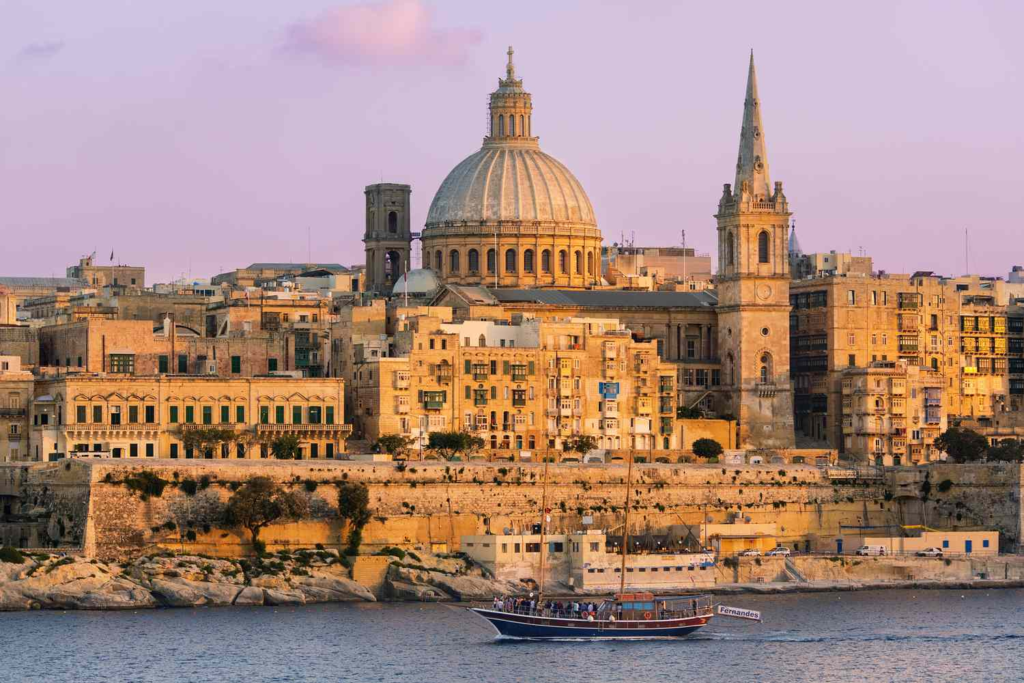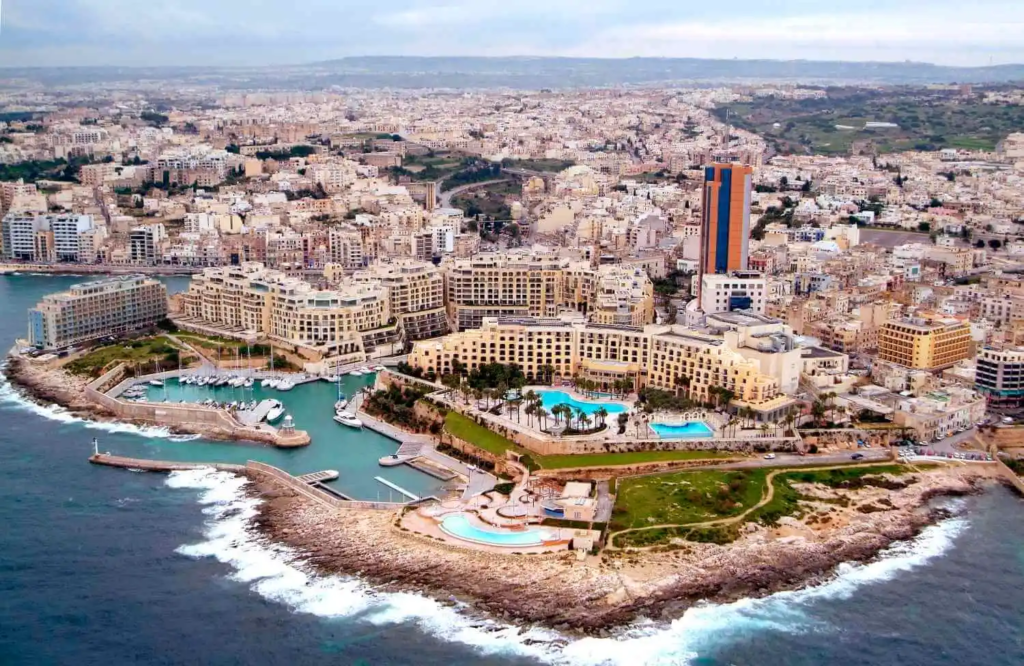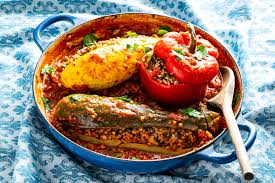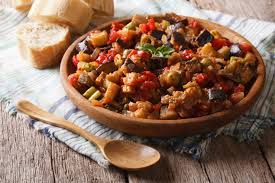Malta, an archipelago located in the heart of the Mediterranean, is a country rich in history, culture, and natural beauty. Known for its stunning architecture, ancient ruins, and crystal-clear waters, Malta attracts millions of visitors each year. From the vibrant capital city of Valletta to the serene landscapes of Gozo, Malta offers a diverse tapestry of experiences for travelers. This blog will explore Malta’s geography, states, history, culture, cuisine, and must-visit destinations, providing a comprehensive overview of this remarkable country.
Table of Contents
Geography
Malta is a small island nation consisting of three main islands: Malta, Gozo, and Comino. The country covers an area of approximately 316 square kilometers, making it one of the smallest countries in the world. Malta is strategically located in the Mediterranean Sea, south of Italy and north of Libya, and is surrounded by beautiful coastlines and stunning blue waters.
The landscape of Malta is characterized by rocky shores, sandy beaches, and a rugged interior dotted with limestone hills. The archipelago enjoys a Mediterranean climate, with hot, dry summers and mild, wet winters. The Blue Lagoon on Comino is famous for its turquoise waters, attracting sun-seekers and water sports enthusiasts alike.
States of Malta
Malta does not have states. Instead, it is divided into 68 local councils, with 54 located on the main island of Malta and 14 on the island of Gozo. These local councils serve as the primary administrative divisions within the country.
| Local Councils (Malta) | Local Councils (Gozo) |
|---|---|
| Attard, Balzan, Birgu (Città Vittoriosa), Birkirkara, Birżebbuġa, Bormla (Città Cospicua), Dingli, Fgura, Floriana, Għargħur, Għaxaq, Gudja, Gżira, Ħamrun, Iklin, Isla (Senglea), Kalkara, Kirkop, Lija, Luqa, Marsa, Marsaskala, Marsaxlokk, Mdina (Città Notabile), Mellieħa, Mġarr, Mosta, Msida, Mtarfa, Naxxar, Paola (Raħal Ġdid), Pembroke, Pietà, Qormi (Città Pinto), Qrendi, Rabat (Malta), Safi, San Ġiljan (St. Julian’s), San Ġwann, San Pawl il-Baħar (St. Paul’s Bay), Santa Luċija, Santa Venera, Siġġiewi (Città Ferdinand), Sliema, Swieqi, Tarxien, Valletta (Il-Belt Valletta), Xgħajra, Żabbar (Città Hompesch), Żebbuġ (Città Rohan), Żejtun (Città Beland), Żurrieq | Fontana, Għajnsielem, Għarb, Għasri, Kerċem, Munxar, Nadur, Qala, San Lawrenz, Sannat, Victoria (Rabat), Xagħra, Xewkija, Żebbuġ (Gozo) |
A Brief History
Malta’s history is marked by a series of significant events and influences from various cultures and civilizations. The archipelago has been inhabited since prehistoric times, with the earliest evidence of human presence dating back to around 5200 BC. The Megalithic temples of Malta, such as Ħaġar Qim and Mnajdra, are among the oldest free-standing structures in the world.
Throughout its history, Malta has been ruled by various powers, including the Phoenicians, Romans, Byzantines, Arabs, Normans, and the Knights of St. John. The Knights played a crucial role in shaping Malta’s identity, establishing Valletta as the capital in 1566. The island became a strategic military outpost in the Mediterranean, leading to significant architectural and cultural development.
In the 19th century, Malta became a British colony, which influenced its language, infrastructure, and governance. Malta gained independence in 1964 and later became a republic in 1974. The country joined the European Union in 2004, further integrating itself into the European community.
Top Ten Most Famous Places to Visit

Valletta, the capital city of Malta, is renowned for its stunning architecture, historical significance, and vibrant cultural scene. A UNESCO World Heritage site, Valletta boasts impressive landmarks such as St. John’s Co-Cathedral, the Grand Master’s Palace, and the Upper Barracca Gardens. Visitors can explore its narrow streets, museums, and art galleries while enjoying panoramic views of the Grand Harbour.
2. Mdina

Mdina, also known as the “Silent City,” is a fortified medieval town that offers a glimpse into Malta’s past. With its narrow streets, baroque architecture, and stunning views from the city walls, Mdina is a must-visit destination. The Mdina Cathedral, a magnificent example of baroque architecture, is a highlight for visitors exploring this historic town.
3. Gozo

Gozo, the second-largest island in the Maltese archipelago, is known for its scenic beauty and tranquil atmosphere. Visitors can explore the ancient Ġgantija Temples, hike along the cliffs of Dwejra, and relax on beautiful beaches like Ramla Bay. Gozo offers a slower pace of life, making it an ideal getaway for those seeking relaxation and natural beauty.
4. Blue Lagoon

The Blue Lagoon, located on Comino, is famous for its crystal-clear waters and stunning scenery. It is a popular spot for swimming, snorkeling, and sunbathing, attracting locals and tourists alike. The idyllic setting and vibrant colors make it a perfect place to unwind and enjoy the Mediterranean sun.
5. The Megalithic Temples

Malta is home to some of the world’s oldest free-standing structures, known as the Megalithic Temples. Sites like Ħaġar Qim and Mnajdra showcase the island’s prehistoric heritage and are recognized as UNESCO World Heritage sites. Visitors can explore these ancient temples and learn about the fascinating history of Malta’s early inhabitants.
6. Marsaxlokk

Marsaxlokk is a charming fishing village known for its colorful luzzu boats and vibrant Sunday market. Visitors can stroll along the waterfront, enjoy fresh seafood at local restaurants, and experience the traditional Maltese way of life. The picturesque scenery and laid-back atmosphere make Marsaxlokk a delightful destination.
7. Sliema

Sliema is a bustling town known for its lively promenade, shopping districts, and dining options. Visitors can enjoy a stroll along the seafront, relax at cafés, and take in views of Valletta across the harbor. Sliema is a popular base for exploring Malta, offering a mix of modern amenities and traditional charm.
8. St. Julian’s

St. Julian’s is a vibrant resort town famous for its nightlife, dining, and entertainment options. The area around Paceville is particularly lively, with numerous bars, clubs, and restaurants. Visitors can enjoy the lively atmosphere and beautiful views of Spinola Bay while experiencing Malta’s nightlife.
9. The Blue Grotto

The Blue Grotto is a stunning sea cave located on the southern coast of Malta. Visitors can take boat tours to explore the crystal-clear waters and marvel at the vibrant colors of the underwater caves. The breathtaking views and natural beauty make the Blue Grotto a popular attraction for nature lovers.
10. Ħaġar Qim

Ħaġar Qim is one of Malta’s most significant archaeological sites, featuring ancient megalithic structures that date back to around 3600 BC. The site offers insight into Malta’s prehistoric civilization and is a UNESCO World Heritage site. Visitors can explore the impressive stone structures and learn about the island’s ancient history.
Culture
Malta’s cultural heritage is a vibrant blend of influences from its historical neighbors and unique traditions. The country is known for its rich folklore, traditional music, and dance. Maltese folk art is characterized by colorful ceramics, lacework, and intricate filigree jewelry. Country has a strong literary tradition, with notable authors such as Dun Karm Psaila and Imre Kertész.
The cultural scene is further enriched by numerous festivals, concerts, and events that celebrate Maltese traditions. The annual Carnival in Valletta showcases vibrant costumes, music, and parades, while the Notte Bianca festival features art, music, and performances throughout the capital city.
Festivals
Malta hosts a variety of festivals throughout the year, celebrating its cultural heritage, traditions, and local customs. The Malta International Arts Festival is one of the most significant cultural events, featuring performances, concerts, and exhibitions by local and international artists. The traditional village festas, held in honor of patron saints, are lively celebrations marked by fireworks, processions, and community gatherings.
Other notable festivals include the Mediterranean Film Festival, which showcases films from across the region, and the Isle of MTV, a popular music event that attracts international artists and thousands of music fans.
Cuisine
Maltese cuisine is a delightful fusion of flavors, influenced by Mediterranean and Italian traditions. Traditional dishes often feature fresh seafood, meats, and locally grown vegetables, reflecting the island’s agricultural heritage. Maltese meals are typically hearty and flavorful, showcasing a variety of cooking techniques and regional specialties.
Popular dishes include rabbit stew (fenek), pastizzi (savory pastry filled with ricotta or peas), and imqaret (date-filled pastries). Visitors to Malta will experience a culinary adventure, with numerous restaurants, markets, and food festivals offering a taste of this rich gastronomic tradition.
Top Eight Most Famous Foods of Malta








Economy
Malta has a diverse and growing economy, characterized by a mix of services, manufacturing, and tourism. The country is known for its strong financial services sector, attracting international businesses and investors. Additionally, Malta’s strategic location in the Mediterranean has made it a hub for logistics and transportation.
Tourism plays a crucial role in the economy, with millions of visitors drawn to the country’s historical sites, natural beauty, and vibrant culture. The government aims to foster innovation and technological advancements while promoting sustainable practices in various sectors.
Future
Country’s future is shaped by its commitment to economic development, cultural preservation, and environmental sustainability. The government aims to promote innovation and technological advancements while preserving the country’s unique heritage and natural resources. As Malta continues to attract international visitors, investments in tourism infrastructure and sustainable practices will be vital for ensuring the long-term sustainability of this Mediterranean gem.
Conclusion
Malta is a captivating country that offers a wealth of experiences for travelers and a rich tapestry of culture, history, and natural beauty. From the stunning architecture of Valletta to the serene landscapes of Gozo, there is something for everyone to explore. The warm hospitality of the Maltese people, combined with the country’s rich traditions and delicious cuisine, ensures that visitors leave with lasting memories. Whether you are seeking adventure, relaxation, or a deeper understanding of history and culture, this country is undoubtedly a destination worth discovering.

